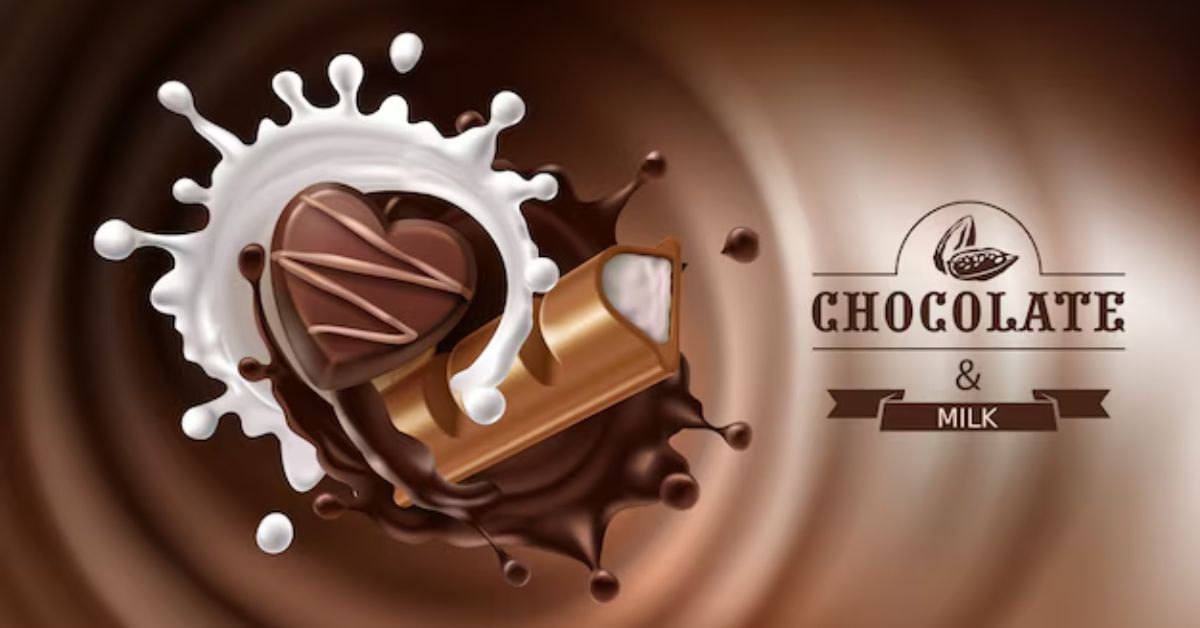Milk holds a special place in the hearts of chocolate lovers around the world. Its creamy texture, sweet flavor, and rich history make it a timeless favorite. Whether enjoyed as a bar, used in baking, or melted into a hot drink, chocolate brings joy to people of all ages. This article explores the fascinating world of milk, from its origins to the reasons it continues to delight taste buds globally.
Introduction
Milk chocolate is more than just a confection. It’s a symbol of comfort, indulgence, and shared moments of happiness. Made from cocoa, milk, and sugar, it offers a smoother, less bitter experience compared to dark chocolate. While it may seem like a simple treat, chocolate’s history and production are rich with complexity.
This article delves into the making of milk chocolates, its health benefits, and how it compares to other chocolate varieties. From historical roots to modern trends, the story of milk chocolate is both sweet and surprising.
The Origins of Milk Chocolate
Milk chocolate was born from a marriage between cocoa and milk, but this innovation didn’t happen overnight. Chocolate’s origins trace back to ancient civilizations, including the Maya and Aztec peoples. They valued cocoa beans, using them in drinks and rituals.
The creation of milk chocolate as we know it today began in the 19th century. Daniel Peter, a Swiss chocolatier, experimented with adding powdered milk to chocolate. In 1875, he successfully created the first commercial milk chocolate, forever changing the chocolate industry.
The Role of Milk in Chocolate
Milk plays a crucial role in shaping the flavor and texture of chocolate. It provides creaminess, balancing the strong taste of cocoa. The addition of powder or condensed milk creates the rich, melt-in-your-mouth sensation milk chocolate is famous for.
Different types of milk can be used to create variations in flavor. Some chocolatiers experiment with goat’s milk or even plant-based milk alternatives, adding a unique twist to traditional chocolate recipes.
Ingredients in Milk Chocolate
Milk chocolate contains a few key ingredients that contribute to its signature taste. These include cocoa solids, cocoa butter, milk, and sugar. Cocoa butter gives milk its smooth, velvety texture. Meanwhile, sugar adds sweetness, making it a popular choice for those who find dark chocolate too bitter.
The quality and proportion of these ingredients can vary between brands. High-end chocolates typically use higher-quality cocoa beans and milk, offering a more luxurious taste experience.
How Milk Chocolate Is Made
Making milk chocolate is a precise and delicate process. First, cocoa beans are harvested and fermented to develop their flavor. After drying, they are roasted and ground into a thick paste called cocoa mass. This cocoa mass is then mixed with cocoa butter, milk, and sugar to create the chocolate base.
The mixture is refined to ensure a smooth texture, often through a process called conching. This step can take hours or even days, depending on the desired quality. The final product is tempered, giving it a shiny finish and satisfying snap when broken.
Why Milk Chocolate Remains Popular
Milk’s wide appeal comes from its balance of sweetness and creaminess. It offers a less intense cocoa flavor, making it accessible to a broader audience. While dark chocolate is often considered more sophisticated, chocolate remains a beloved classic.
Children and adults alike enjoy milk for its comforting, familiar taste. Its versatility also plays a role in its popularity, as it can be used in countless recipes, from cookies to cakes to hot chocolate drinks.
Health Benefits of Milk Chocolate
Though milk is often seen as an indulgence, it does offer some health benefits when consumed in moderation. Cocoa contains antioxidants known as flavonoids, which are linked to heart health and reduced inflammation. Milk also provides calcium and other nutrients from the milk content.
However, chocolate tends to have more sugar than its dark counterpart, so it’s important to enjoy it in moderation. Many health-conscious consumers are turning to low-sugar or organic varieties of chocolate to strike a better balance between indulgence and wellness.
Milk Chocolate vs. Dark Chocolate
Milk chocolates are often compared, each with its own set of fans. Dark chocolate is known for its high cocoa content and bitter taste. It contains less sugar and no milk, making it a choice for those who prefer a richer, more intense chocolate flavor.
On the other hand, chocolate offers a creamier, sweeter taste that appeals to a broader audience.
The Science Behind the Smooth Texture
The smooth, creamy texture of chocolate is no accident. It’s the result of careful processing, particularly during the conching phase. Conching involves continuously mixing the chocolate, breaking down any gritty particles, and evenly distributing the cocoa butter.
This process allows it to melt effortlessly on the tongue, creating its signature mouthfeel. The balance of fat from cocoa butter and milk helps create this luxurious texture.
Milk Chocolate in Popular Culture
Milk chocolates has become a global phenomenon, featuring prominently in various forms of media and advertising. Iconic brands such as Hershey’s, Cadbury, and Lindt have cemented chocolate’s place in popular culture. Their chocolate bars, commercials, and jingles are recognizable across generations.
From chocolate-covered caramels to ice cream sundaes, chocolate plays a starring role in the world of sweets.
Famous Brands
Several brands have become synonymous with milk, offering consumers a wide variety of options. Some of the most famous brands include:
- Hershey’s: Known for its classic chocolate bars and Kisses, Hershey’s is an American chocolate icon.
- Cadbury: This British brand is famous for its Dairy Milk bars, beloved for their creamy taste.
- Lindt: A Swiss chocolatier known for its smooth, premium chocolate offerings.
These brands have mastered the art of creating delicious milk chocolates, offering everything from mass-market treats to luxury confections.
Different Uses
Milk chocolates is incredibly versatile, making it a staple in both sweet and savory dishes. Its smooth texture also makes it perfect for melting into hot chocolate or dipping fruits and snacks.
Some chefs incorporate milk chocolates into sauces or meat marinades, adding a sweet, rich depth of flavor.
Sustainability
As consumers become more conscious of their food choices, sustainability has become a key issue in the chocolate industry.
Fair Trade and Rainforest Alliance certifications are becoming more common, ensuring that farmers receive fair wages and that environmentally-friendly practices are in place. Consumers can support these efforts by choosing chocolates with such certifications.
The Future of Milk Chocolates
The future of milk looks exciting, with trends focusing on both flavor innovation and ethical sourcing. Chocolatiers continue to experiment with new ingredients, including plant-based milks and exotic flavorings like lavender or sea salt. Meanwhile, the push for organic and sustainably sourced cocoa ensures that milk remains a responsible indulgence.
These developments promise to keep chocolate relevant for generations to come.
Conclusion
Milk chocolate remains a beloved treat, offering sweetness, comfort, and nostalgia in every bite. Its rich history, smooth texture, and universal appeal have secured its place in the world of chocolate. As brands innovate and sustainability takes center stage, the future of milk looks brighter than ever.
FAQs
- Is milk healthier than dark chocolate? Dark chocolate typically contains more antioxidants and less sugar.
- Can chocolate be used in baking? Yes, milk chocolates work well in baking and is commonly used in cookies, cakes, and brownies.
- What is the best way to store chocolate? Store milk chocolates in a cool, dry place, away from direct sunlight, to maintain their texture and flavor.
- Does milk chocolate have less cocoa than dark chocolate? Yes, a lower cocoa content, giving it a sweeter, creamier taste.

